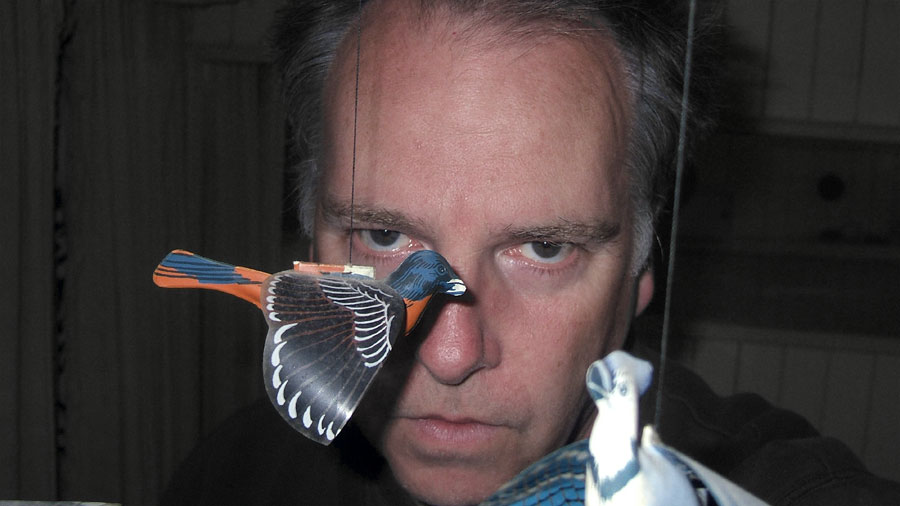The
Eternal Golden Braid
Director Guy
Maddin offers a few thoughts on Ingmar Bergman, Quentin Tarantino, Luis
Bu–uel and other matters pertaining to the fertility of imagination;
SparksÕ Ron & Russell Mael chip in some wisdom of their own
ŅYou know how plays have read-throughs? Well,
The Seduction of
Ingmar Bergman is a
read-through for a movie of a radio opera,Ó says director Guy Maddin. The
event at the L.A.Õs Ford Amphitheatre on June 25 was a
theatrical/cinematical staging and musical performance of the Sparks
production originally commissioned for Swedish radio in 2009. The
Canadian filmmakerÕs moderne-nostalgist sensibility was a key factor in
Ron and Russell MaelÕs choice of a staging chief for this inside look at
the proposed film version of their story about an iconic auteur lured to
Hollywood to make blockbuster movies for the masses.
Maddin has earned acclaim for
recombinant reveries such as The Saddest Music in the World (2003), the silent Brand Upon the Brain! (2006) and the Toronto Film Festival prize-winning My
Winnipeg (2007), films that adapt
and warp the scratchy grain of early Hollywood melodramas and political
propaganda reels in beguilingly burnished mˇlanges, sucking in and
spewing out the myths and clichˇs of his ŠŠ and our ŠŠ innermost worlds,
usually of the psychosexual variety.
The
project thus hybridizes the concert experience with theatrical action and
a somewhat voyeuristic view of real, true on-set moviemaking.
ŅItÕs a little vivisection, without anyone being hurt,Ó he
says with a laugh.
The Seduction of Ingmar Bergman offers the pithily amusing what-if of
the famed film artisteÕs enticement to Tinseltown, where heÕs wined and
wooed, harassed and haggled with. He suffers much interior turmoil, does
this serious European man in the land of the hyper-unreal.
ThatÕs the type of scenario Maddin likes to sink his fangs
into, a juicy opportunity to dissect and enhance a legend. HeÕll
semi-precisely hodgepodge his admittedly flawed memories of BergmanÕs
story with a million other things ŠŠ just to see what happensÉ

GUY MADDIN: When IÕm designing a movie I make
collages. I throw little collage parties and I have artist friends come
over and I suggest some themes and I supply a bunch of old magazines and
books that we cut up over a series of a few daysÕ length, then we take a
bunch of images which usually find their way into my movies.
BLUEFAT: You juxtapose images and sound to
create a third entity.
MADDIN: IÕm continually amazed at the occult
power that lies in simply taking an image and looking at it while
listening to a sound. Who knows how or why certain combinations work
better than others? ThereÕs almost no logic to it; itÕs not a science,
itÕs something paranormal or some sort of charlatanism or something.
Maybe there are people that know why it works ŠŠ I know the
Soviet filmmakers wrote long essays on it, but who can read those? Me,
though, IÕm more comfortable just knowing itÕs an occult power and
through trial and error you keep finding things that work and that donÕt
work. When you think theyÕll work youÕll find they donÕt.
Maybe
AmericaÕs greatest practitioner of this occult science is Quentin
Tarantino, who will write core themes around a piece of music. But IÕm
sure even he doesnÕt know why it works. In my own experience, IÕve
written themes around one piece of music and I almost always find it
doesnÕt work for that piece of music, and that if I just take almost any
other piece of music at random and put it on itÕll work better. [laughs]
(continued)
|